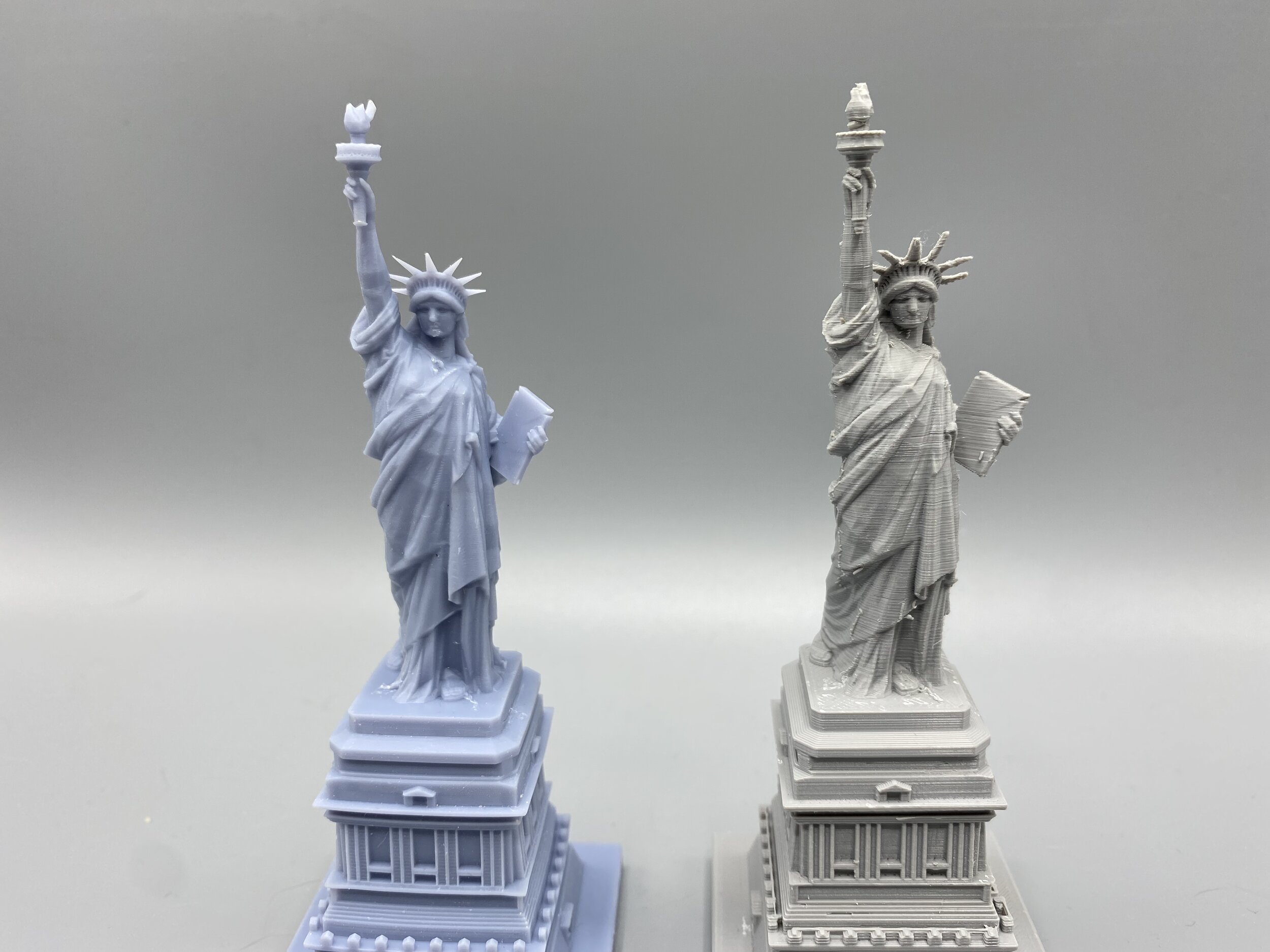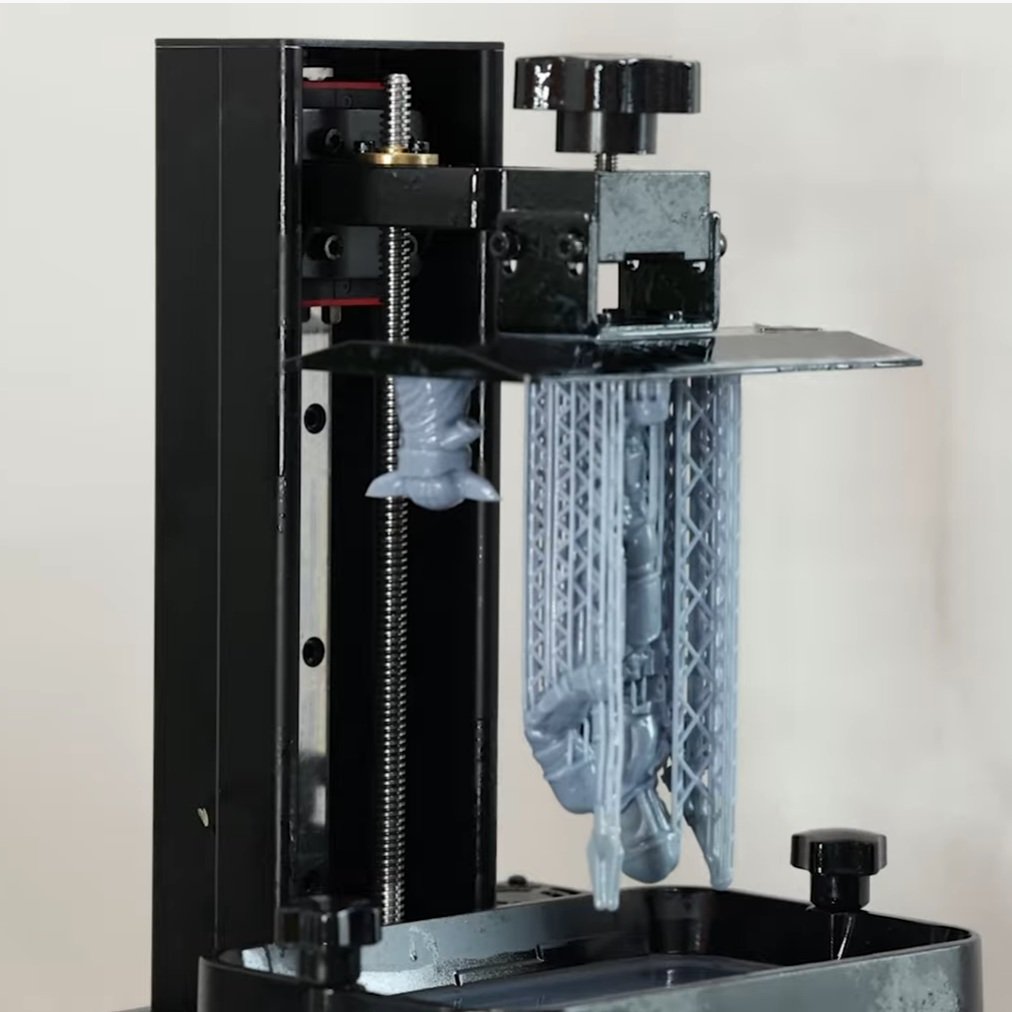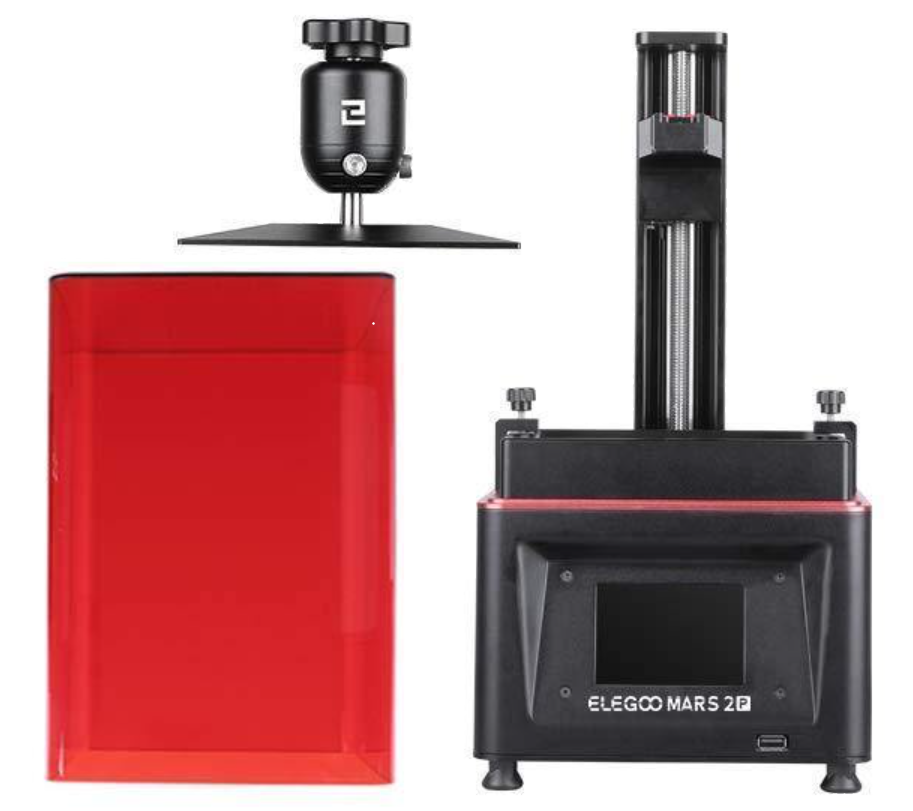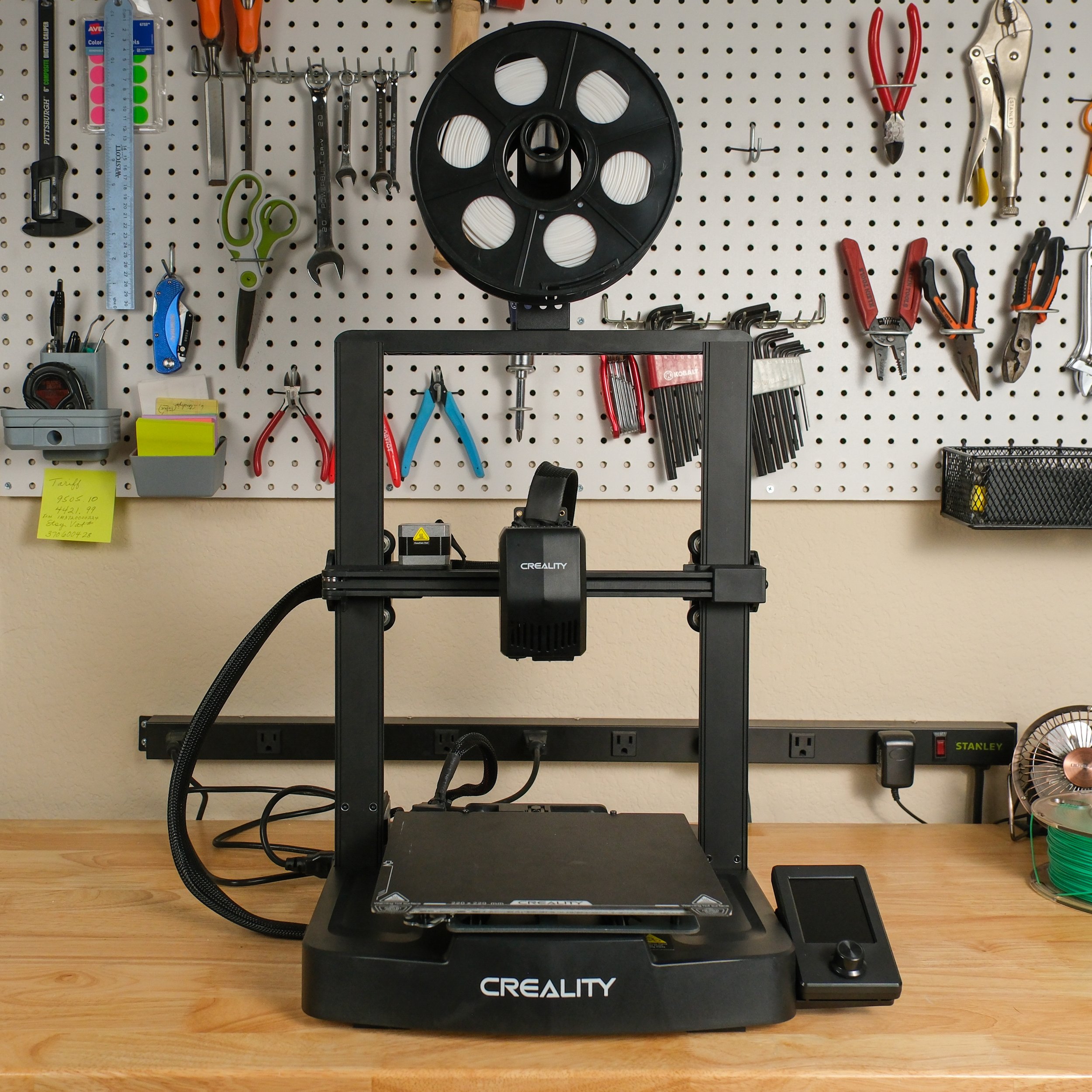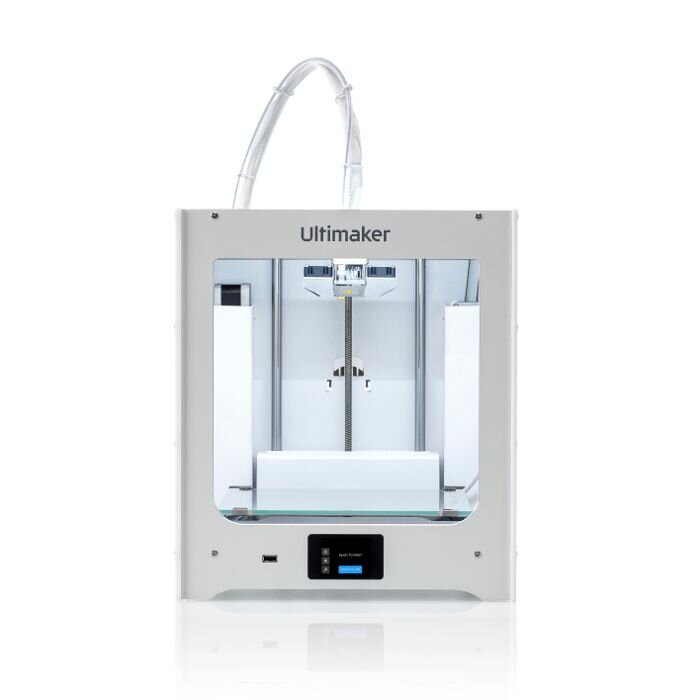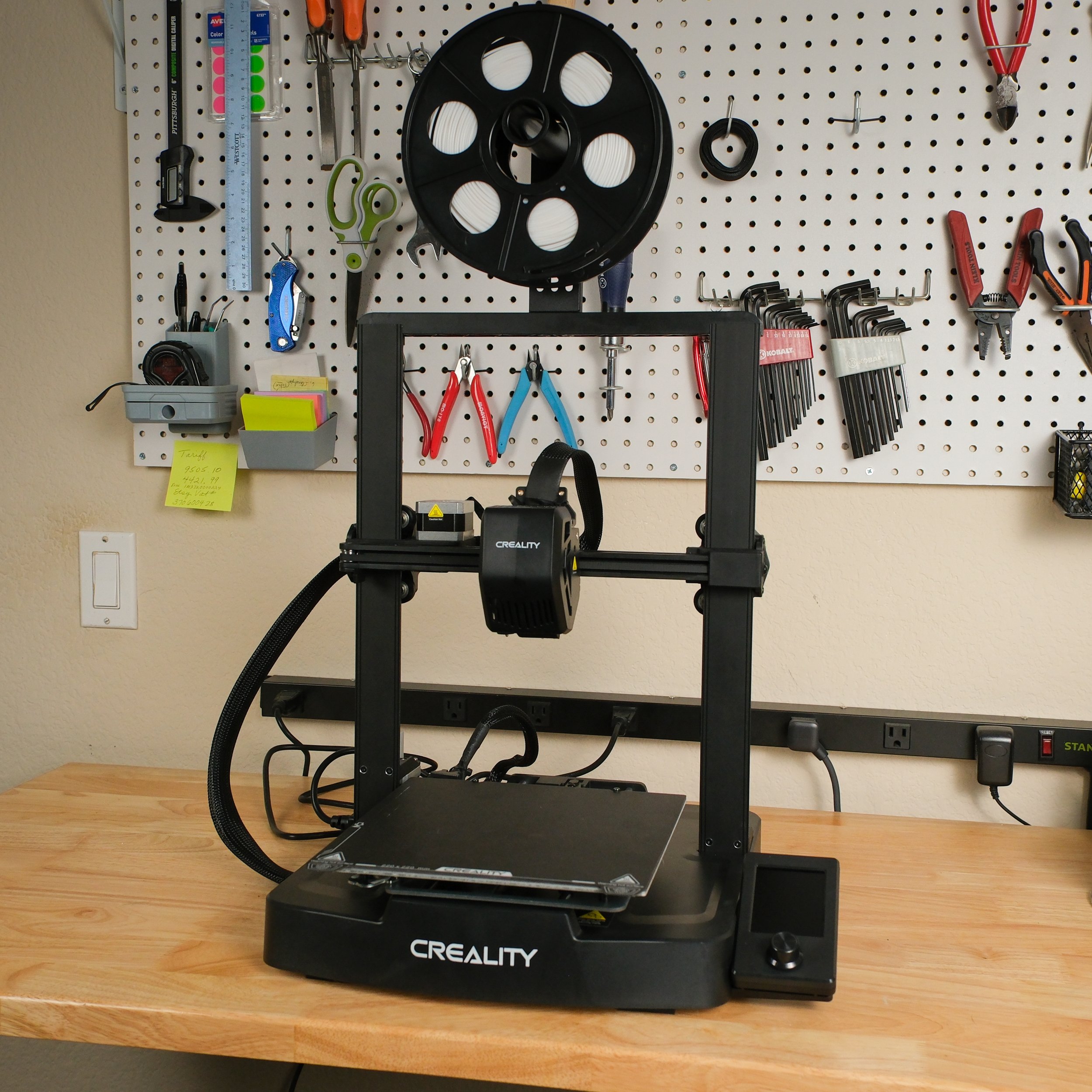Choosing a 3D Printer: Filament or Resin?
If you are looking to buy a 3D printer for home use, there are two different technologies that you can choose from: Filament or Resin. You might be asking: is filament or resin better for 3D printing? The answer is: it depends what you will be using it for. Each technology is a different tool meant for a different job. In this article, we will look at the tradeoffs of both filament and resin 3D printers to give you a good idea of which type is right for you. Whether you are buying your first 3D printer or have significant experience in printing, both of these printing technologies have a lot to offer and one of them is likely to be the best choice for your application.
First, a very brief overview of how each of these technologies works:
Filament printers build parts by melting plastic and depositing it into many stacked flat slices, or layers, which together form a 3D part. Each layer is created by moving the nozzle in a specified path while it deposits melted plastic. Once the layer is completed, the nozzle is moved up, and the next layer is built on top of the last one, until a full 3D part is created. Filament printers are also referred to as FDM (Fused Deposition Modeling) or less commonly FFF (Fused Filament Fabrication) machines. These terms are interchangeable.
Resin printers form parts from liquid resin which cures, or solidifies, when it is exposed to UV light. Similar to Filament printers, resin printers build parts in layers, but do so by exposing each slice to a pattern of UV light to solidify the resin in the desired locations. You’ll see two types of common resin printers, DLP (digital light processing) and SLA (Stereolithography). These technologies differ in how they cure the resin: DLP printers use a UV LCD screen (basically a small monitor) to cure an entire layer at once, while SLA uses a focused laser which traces a path through each layer. From the outside, these printers are very similar. Since most lower cost resin printers use the DLP technology, we will focus on that technology in this article.
Keep reading to learn more about FDM vs SLA and how to choose the best 3D printer for your needs.
Resin printers form each layer at the base of the vat by shining UV light on selected portions of the liquid resin. Once solidified, the print bed rises a small amount, liquid resin flows into the gap, and the process repeats.
Filament printers form a thin layer with melted plastic, then lift the nozzle a small amount. The printer repeats this process for each layer until the full part is formed.
When considering which of these types of 3D printers to purchase, you’ll first need to think about what types of objects you are planning to make. Filament printers are superior for producing strong, larger parts, while resin printers excel at producing fine details and can print much more precisely on small parts.
There is more to the story, though. There are a few important factors to consider when choosing which of these technologies is best for your specific needs.
Note: Creality Experts receives a commission for items you purchase from this page, at no additional cost to you. For more information, please see our affiliate link policy.
Print Quality
Resin printers are known for their superior surface quality, both in their ability to resolve small details on prints and for producing models with no visible layer lines. Resin prints actually do have layers, but they are so thin that they are not typically visible to the naked eye. For comparison, each layer on a resin printer is typically 25 - 50 microns thick, while filament printer layers are typically 100 - 300 microns thick.
Resin printers are able to capture very fine details because the resolution of each layer is defined by the size of pixels on the LCD screen, which are typically ~70 microns for consumer DLP 3D printers. By comparison, filament printer resolution is limited by the size of the opening in the nozzle where melted material is deposited, which is typically 0.4 mm (400 microns). It is possible to install smaller nozzles on filament printers, but the smallest viable nozzles are still 200 microns. Such a nozzle will also increase the printing time for the filament printer.
A resin print (left) compared to a filament print (right). Resin printers are superior at capturing small details and producing a very smooth surface finish without visible layer lines, but make sure to consider all of the factors when making a decision on which technology you prefer.
If you are looking to make small, detailed objects such as mini-figures, jewelry prototypes, or parts where high accuracy is critical, resin printers are a great choice.
Printed Part Durability
Parts printed from filament offer high durability, even when using standard plastics such as PLA. In addition, you can use alternate materials such as PETG and ABS which offer increased strength and heat/UV resistance for parts used outdoors. Parts printed by an FDM 3D printer do have substantially less strength when forces are acting across layers, so it is critical to consider the orientation of parts to maximize strength.
Standard resin prints are fairly brittle and are typically not preferred for functional parts that will be exposed to substantial forces. Additionally, since the resin is reactive to UV, exposure to sunlight causes the prints to become increasingly weaker. That said, there are high-strength resins on the market which do help improve the strength of resin prints. Unfortunately, we have found that this resin can be difficult to fully clean off of the printed part and often leaves sticky residue on prints. We have had more success blending this resin with standard resins to balance these negative effects with the improved strength.
Overall, filament printing is a better choice for functional parts, since it offers improved strength and more options for larger parts, which we’ll look at next.
Build Volume
Filament printers have substantially larger build volumes than resin printers.
The printer links in this section point to Amazon.com.
If you are looking to print larger parts, filament printers have a clear advantage. Most filament 3D printers such as the Creality Ender 3 V3 SE have a build volume of 220 x 220 x 250 mm, and many larger volume printers are available as well:
Creality Ender 3 S1 Plus: 300 x 300 x 350 mm
Creality CR-M4: 450 x 450 x 475 mm
Standard resin printers have a much smaller build volume. Entry level printers such as the Creality Halot-One and Elegoo Mars are standardized at 130 x 80 x 160 mm, while more premium large format Resin printers such as the Elegoo Saturn are 192 x 120 x 150 mm, which is still substantially smaller than even the entry level filament printers.
Printing Speed
With typical settings, filament printers can produce single objects much faster. If you add more objects to the print bed, as you might expect, the print time will increase proportionally. This is because the nozzle must trace each part individually.
Resin printers, however (specifically the DLP type) can print multiple objects just as fast as a single object, since the LCD is exposed to each layer for a fixed amount of time regardless of how many parts you are printing. In these cases, resin can often be substantially faster for cases where you need a lot of parts. This is limited by the small size of the print bed, and one advantage of larger resin printers like the Elegoo Saturn is taht you can quickly print a lot of parts on their larger print beds.
Initial Assembly and Setup
Assembly
The printer links in this section point to Amazon.com.
Most filament printers require some assembly, but the difficulty can vary. Printers such as the Creality Ender 3 V3 SE and Ender 3 Max Neo arrive mostly assembled, and only take around 15 minutes to assemble. Smaller printers such as the Ender 3 V2 ship in more pieces and usually take around an hour to assemble. Once assembled, leveling the print bed can take a bit of trial and error.
Resin printers, due to their smaller size, typically ship nearly fully assembled. For the Elegoo Mars we use, the only required assembly was sliding the print bed assembly onto the printer. Leveling the bed is simpler than filament printers - you just loosen a few screws in the bed, home it with a sheet of paper underneath, and retighten.
Many filament printers like the Creality Ender 3 V2 are shipped in many parts and require an hour or so to assemble. However, newer filament printers like the Ender 3 Neo series are being shipped almost fully assembled
Most resin printers ship nearly fully assembled due to their smaller footprint and simpler design.
Software Setup
Once assembled, it can take some time to learn all of the different settings that are available for filament printers in the printer slicer software to get the best quality prints. Many modern slicers such as PrusaSlicer and Cura have premade profiles for most Creality printers which make this process easier, but it is still important to learn how the various settings work since adjustments are often needed to optimize printing for certain types of models. You’ll also need to experiment with how models are oriented on the printer to get the best results.
Resin printers have far fewer settings to configure, and it is easy to get printing quickly once the printer is assembled. The only settings you will need to ever change are the layer time (how long each layer is exposed to the UV light to cure) and settings for support material. Print orientation is also important for resin printers to make sure the print stays adhered to the bed for the entire print.
Resin printers have few settings to configure, and typically print well out of the box
Filament printers have quite a few settings to get familiar with when dialing in your printer.
Overall, resin printers are substantially easier to initially set up, due to their very simple assembly and simplicity of print settings.
Ease Of Use
While resin 3D printers are simple to get set up, the liquid resin adds some complications to using the printer. It is important to note that the resin is a skin irritant, so its important to wear gloves whenever you are coming into close contact with the resin, such as removing completed prints or removing the resin vat. The level of irritation can vary from person to person. We’ve heard stories of people getting serious burns from minutes of contact with the resin, however personally we have not ever had a reaction to small splashes on the skin that can sometimes occur (though we wash them off with soap as soon as it happens to be safe). In addition, the resin has a distinct chemical odor that some people find unpleasant, though there is no conclusive evidence that it is harmful to breathe. It is still recommended to keep resin 3D printers in a well-ventilated area.
Because completed prints will have remaining liquid resin on the surface once they are finished, you will need to post process all prints using a solvent such as Isopropyl Alcohol (IPA). You can purchase specific washing stations for this purpose, or use a lower cost pickle strainer. The solvent will become clouded with resin and become ineffective after a a few uses and will need to be replaced and disposed of safely (you can’t pour it down the drain).
Swapping colors requires carefully pouring the resin from the vat into the resin container, then cleaning the vat (or purchasing dedicated vats for each material).
Another challenge with using resin is that changing materials can be time consuming. To do so, you’ll need to carefully pour the resin from your vat back into the resin container, clean the vat out completely, and pour the new resin in the vat. We have purchased a number of spare vats which we use for common colors to avoid the need for changing the color in the vat. The vats can be easily exchanged but the cost of additional vats can add up.
Overall, filament printers are easier to use once they are set up. All of the materials can be handled safely with no protection, and no post processing is required for most prints, other than removing support material, if needed. Swapping colors is also simple, and is just a matter of pulling out the old filament and inserting the new material.
Maintenance
Resin printers have few moving parts—the only one is the Z axis Lead screw which lifts the print bed as the print forms. For that reason, they are much less likely to encounter mechanical issues. However, there are a couple of components that you will most likely need to replace over time:
The FEP film on the bottom of the vat can bend or tear - as you print more parts, the thin film which forms the bottom of the vat can become bent or develop slight leaks. When this occurs, you can either replace the film or get an entirely new vat for a fairly low cost. The FEP film replacement is not too difficult but takes some time since there are a lot of screws securing it to the vat.
The LCD can develop issues over time - such as dead pixels or regions, which will cause sections of your prints to have holes in them. Replacement LCDs are available, but require disassembling the outer shell of the machine. Once you access the LCD, you can plug the new LCD in with no soldering or wire splicing required.
Filament printers have moving parts in all 3 axes, which means that over time, parts of the motion system will need replacement or tightening. We have found that these types of repairs are fairly infrequent. Most of the maintenance of filament printers relates to the filament path - the extruder which pushes filament, and the hot end which melts it before depositing it onto the part.
The extruder gear, which contacts the filament and pushes it into the hot end can wear over time, and the spring loaded extruder mechanism can crack if your 3D printer is using an extruder made of plastic. These issues can be avoided by ensuring your printer has a steel extruder gear and an all-metal extruder.
The internal components of the hot end tend to wear out over time since it is exposed to high temperatures. You can replace most individual components of the hot end, or replace the entire assembly if time is more of a factor than cost. We have a detailed guide on repairing these hot end issues, and feel that repairing the hot end is fairly simple.
Overall, filament printers require a bit more maintenance, but there isn’t a substantial difference here.
Cost
In the past, purchasing a resin 3D printer was substantially more expensive than a filament printer. However, there are a number of lower-cost resin machines on the market now using DLP technology. Because of this, budget resin 3D printers are priced in the same range as entry level filament 3D printers. This means that if you’re looking for a budget resin 3D printer or a budget filament 3D printer, you have plenty of options. For higher end printers, resin tends to be more expensive. We’ll look at some side by side comparisons to give you a general idea:
Budget / Entry Level
Filament Printer: Creality Ender 3 V3 SE
(view on Amazon)
Cost: $200-220
Basic features
Build volume: 220 x 220 x 250 mm
Resin Printer: Elegoo Mars
(view on Amazon)
Cost: $175-250
Basic features
Build volume: 130 x 80 x 160 mm
Mid-Range
Filament Printer: Creality K1
(view on Amazon)
Cost: $500-600
Upgraded features such as enclosed print chamber, WiFi connectivity, and high-speed printing
Build volume: 220 x 220 x 250 mm
Resin Printer: Elegoo Saturn
(view on Amazon)
Cost: $450-550
Upgraded features such as a high resolution LCD and dual linear rails
Large build volume: 192 x 120 x 200 mm
High-End / Industrial
Filament Printer: Ultimaker S3
Cost: $4,000 - 5,000
Industrial-grade components and warranty, wireless printing
Build volume: 230 x 190 x 200 mm
Resin Printer: Phenom Prime MSLA
Cost: $3,000 - 4,000
6K UHD LCD, warranty, Masked SLA technology for improved resolution and speed
Build volume: 276 x 155x 400 mm
Ongoing Costs
Its important to consider the total down of ownership of a 3D printer, because the ongoing costs can be a more substantial portion of the total cost than the purchase price of the machine itself. The majority of ongoing costs are the materials you use to make parts: the filament or resin.
Filament
Typically sold in 1KG rolls
Cost: $15 - 25 per roll
Usage depends greatly on part size
Resin
Sold in 500g to 1kg sizes
Cost: $30-40 per 1kg
Since parts are smaller, lasts longer
Overall, the cost of resin is higher per kilogram, but you will likely use less with a resin printer due to its smaller build size. If you are planning to print larger parts on your resin printer, you can reduce resin usage by making the parts hollow and including a drain hole to allow the unused resin in the center cavity to drain out. For filament printers, parts typically use a meshed infill pattern, which saves material.
Another smaller cost to consider is maintaining the 3D printer and making sure you have required supplies. Resin printers cost a bit more in this area, since you’ll need to maintain a stock of disposable gloves and a solvent such as IPA to post-process prints. Repair parts for either type of printer are typically fairly inexpensive, and you won’t be buying them often.
Making Your Decision
Now that you have a general idea of which technology is better for your needs, the next step is to take a look at a few printers in each category to learn more. If you are looking for your first 3D printer, a good place to start is with our entry level picks for both filament and resin printers.
Filament Printer Top Pick: Creality Ender 3 V3 SE
The Ender 3 V3 SE offers a number of improvements over older printers in the Ender 3 series such as a direct drive extruder, automatic bed leveling, and a more robust motion system that supports higher print speeds. Due to its ease of use and low cost, it is our top recommendation for a first 3D printer. We have purchased many printers in the Ender 3 series and have been very pleased with them, and the V3 SE is no exception.
Resin Printer Top Pick: Elegoo Mars 3 4K
The Elegoo Mars is a great resin 3D printer at a low cost. The 4K LCD improves print quality beyond what was previously possible in affordable resin 3D printers. We have used two Elegoo machines in our workshop and have seen impressive results considering the low price point. They were very easy to set up and begin printing with, and have been very reliable.
